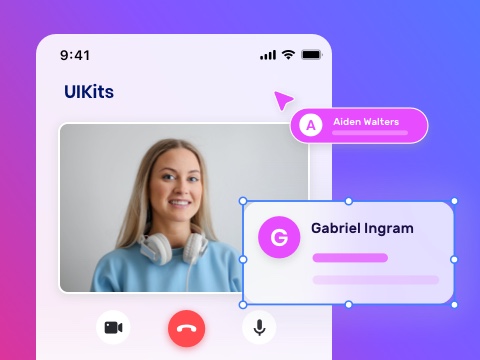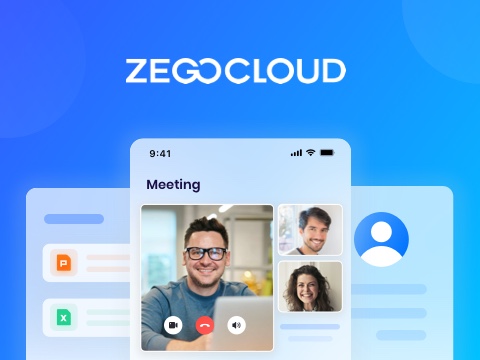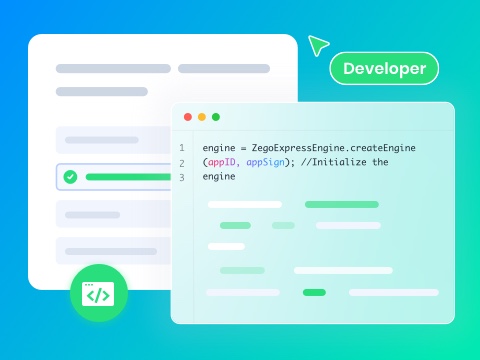Why Latency Matters in Voice AI
Voice agent latency isn’t just a metric—it’s the heartbeat of natural conversation. While an AI might sound remarkably human, even slight delays can shatter the illusion and erode user trust. The research is clear: our brains expect conversational pauses under 300 milliseconds to feel seamless. Push beyond one second, and you enter the “digital uncanny valley” where frustration replaces engagement.
This is why voice agent latency represents a fundamental business differentiator, not just a technical benchmark. In mission-critical applications from telehealth and customer support to live commerce, low-latency voice interaction serves as the make-or-break factor that determines whether users perceive your voice agent as a helpful partner or just another frustrating bot.
What Counts as Low Latency Voice Interaction
To design effective low latency voice interaction, developers need to know what “good enough” really means.
- < 300 ms: Human conversation-level latency. Nearly indistinguishable from natural speech.
- 300–800 ms: Acceptable for most real-time applications (customer service, smart assistants).
- 800 ms – 1.5s: Noticeable delays; only tolerable for simple Q&A interactions.
- 1.5s: Breaks conversational flow; leads to user frustration and drop-offs.
The goal, therefore, is to keep end-to-end latency under one second—ideally closer to sub-500ms for high-quality voice agents.
Deconstructing the Latency Pipeline: Where Do Delays Happen
To solve latency, we must first understand its sources across the entire voice interaction journey:
- Client-Side (User Device) – ~50-100ms
- Audio capture and pre-processing (noise suppression, echo cancellation)
- Initial encoding and packetization
- Device performance variability
- Network Transport – ~100-300ms
- Physical distance and routing efficiency
- Jitter and packet loss requiring retransmission
- Cellular vs. WiFi network conditions
- Cloud AI Processing – ~300-700ms
- ASR (Automatic Speech Recognition): Converting speech to text
- NLU/LLM Processing: The “thinking” time for generating contextual responses
- TTS (Text-to-Speech): Synthesizing the response back into natural audio
- Return Journey – ~100-200ms
- Network transport back to user device
- Audio decoding and playback
The cumulative effect often pushes response times beyond the critical 1-second threshold without careful design.
Key Drivers of Low Latency Voice Interaction
1. Real-Time Transport Protocols
- WebRTC is the gold standard for real-time transmission.
- Enables sub-second voice streaming with adaptive jitter buffering.
- Reduces latency caused by unstable networks.
2. Streaming ASR (Automatic Speech Recognition)
- Instead of waiting for full sentence completion, streaming ASR transcribes words as they are spoken.
- This drastically reduces recognition-to-response time.
- Example: recognizing intent after the first 2–3 words, instead of waiting for the entire query.
3. Lightweight NLU Models
- Large language models (LLMs) are powerful but often too heavy for real-time inference.
- Optimized NLU pipelines focus on intent classification + entity extraction to speed up decisions.
4. Fast TTS Engines
- Neural TTS models must generate audio in real time, ideally faster than playback speed.
- Pre-caching common responses can cut TTS latency by half.
5. Edge Computing & Hybrid Deployment
- Deploying parts of the pipeline at the edge (e.g., ASR near the user) reduces round-trip latency.
- Hybrid setups combine cloud flexibility with edge performance.
A Strategic Blueprint for Low-Latency Design
Achieving consistent sub-second responses requires optimization at every layer:
Architecture Principle: Embrace Parallel Processing
Instead of sequential processing (ASR → NLU → TTS), implement streaming pipelines where possible:
- Stream partial ASR results to the LLM before the user finishes speaking
- Begin TTS generation as soon as the first meaningful text segments are available
- Overlap network transmission with AI processing
Tactic 1. Optimize the Network Layer
- Deploy using global low-latency networks with intelligent routing
- Implement WebRTC or similar real-time protocols
- Use edge computing to minimize physical distance to users
Tactic 2. Streamline AI Processing
- ASR: Choose models optimized for speed, use interim results, and implement endpoint detection
- LLM: Employ distilled models for core interactions, implement response caching for common queries, and set strict token limits
- TTS: Utilize streaming TTS that generates audio chunks incrementally
Tactic 3. Client-Side Optimizations
- Use efficient audio codecs like Opus
- Implement jitter buffers and packet loss concealment
- Pre-warm connections and pre-load models where possible
The SDK Advantage: Why Build vs. Buy Is a Latency Question
Building and maintaining a real-time AI pipeline is complex. Specialized voice agent SDKs bypass years of infrastructure work and deliver performance out of the box.
ZEGOCLOUD’s AI Agent SDK is engineered specifically for sub-second performance:
Pre-Integrated, Optimized Pipeline
Our SDK handles the entire latency-sensitive workflow—network transmission, ASR, LLM integration, and TTS—as a single, optimized system rather than disconnected components.
Global Edge Network
With 200+ data centers worldwide and intelligent routing, we minimize network latency regardless of user location. Our proprietary media processing ensures stable performance even in challenging network conditions.
Performance-Optimized AI Components
- ASR: <200ms processing time with 98%+ accuracy
- LLM: Smart context management and response caching
- TTS: Streaming generation with <100ms first-byte time
Conclusion
Low latency voice interaction is the difference between an AI that talks and an AI that truly converses.
By optimizing every layer—network, ASR, NLU, and TTS—developers can achieve sub-second responsiveness that transforms user experience.
With ZEGOCLOUD Conversational AI SDK, businesses can launch real-time voice agents that engage users naturally, scale globally, and set new standards in customer interaction.
Start building your low-latency voice agent today → ZEGOCLOUD Conversational AI
Let’s Build APP Together
Start building with real-time video, voice & chat SDK for apps today!










